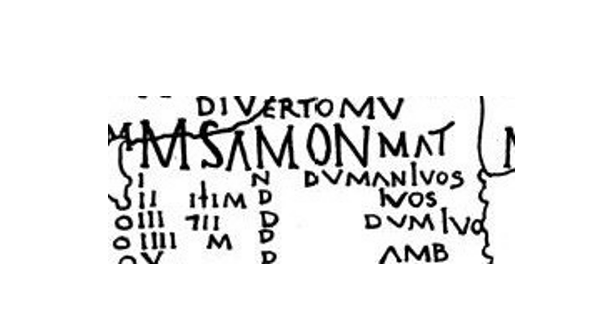Here Comes Summer!(?)

It is just a few days until one of the most important times in the Irish traditional year: Samhain, or 1 November and the night preceding it. That night is of course also the night of Hallowe’en; and Samhain too has had potent supernatural associations for as far back as our records extend. (See for instance “Secrets at Samhain”, posted on News / Events this time last year.) There are many strange things about Samhain; one is its name, which is derived from sam-, the Celtic root meaning “summer” (cf. Welsh haf, English “summer”). How can this be so, seeing that Samhain marks the traditional beginning of winter?
Some scholars have tried to escape from this difficulty by proposing that Samhain actually goes back to a different root, seen for instance in Sanskrit samana “assembly, gathering”. But this approach, although it looks promising at first, does not really work. An ancient Celtic calendar, found at Coligny in France, has a month SAMON-, a name which exactly corresponds to Irish Samhain.
The month that comes 6 months later in the same calendar is named GIAMON-, clearly containing the Celtic root meaning “winter” (cf. Irish geimhreadh, Welsh gaeaf). So SAMON- must have been a summer month; and there seems to be no way of escaping the conclusion that Samhain, at the beginning of winter, is likewise a feast of summer.
We can find an explanation for this anomaly in The Adventure of Nera, the Old Irish tale which probably has most to tell us about the nature of Samhain. Nera, after three days and nights in the Otherworld, is about to return home; but, because a magical distortion of time means he will be returning to the same moment on Samhain night as that in which he departed, he is concerned that no one will believe his story of where he has been.
“How will it be believed that I have gone into the síd?” asked Nera. “Bring the fruits of summer with you,” said the woman [with whom he had been living]. So he brought wild garlic with him, and primroses and buttercups. (Koch & Carey, Celtic Heroic Age, p. 129)
Samrad, the word for “summer” that the woman uses, comes from the same root as Samain; and the plants that Nera brings with him belong to May, 6 months removed from November. Time in the Otherworld – if there even is such a thing – is wholly different from the time we know, perhaps its opposite; and this alternative reality was so important to the early Irish that they named one of the chief dates in their calendar with reference to it, rather than to the time of our world.
For further discussion, with a more detailed account of the linguistic evidence, see J. Carey, “Sequence and Causation in Echtra Nerai”, Ériu 39 (1988) 67-74.
Roinn na Sean- agus na Meán-Ghaeilge
Department of Early and Medieval Irish
Contact us
Bloc A, Urlár na Talún, Áras Uí Rathaille / Block A, Ground Floor, O'Rahilly Building, UCC, Cork
